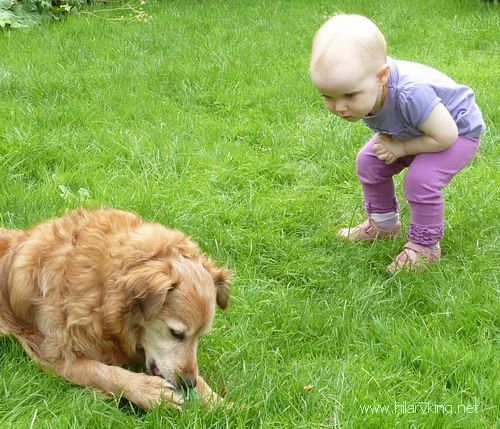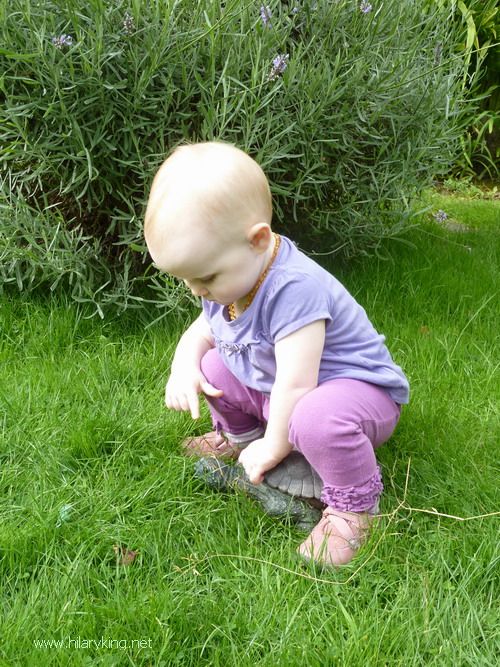Bending Forwards
Children usually move around freely and are able to bend down with ease and poise but as they grow older, people often find that bending forwards becomes more of a problem.
This is usually because of the habits we develop over time that distort the way that we move. When adults bend forwards, they often curl over or arch the back, in such a way that the back muscles work extra hard, put pressure on the spine and the intervertebral discs become compressed. This can be the route through to developing problems such as sciatica, as the compressed discs gradually impinge on the spinal nerves and cause discomfort then pain. How good when this can be avoided (Alexander lessons can help!).
I managed to get another great shot of this child as she bent down to see what the dog is eating. She is quite naturally using a deep version of what F M Alexander called ‘the position of mechanical advantage‘ – and what Alexander teachers now call ‘monkey position’. She flexes her knees and ankles and easily folds forwards from her hips joints whilst looking at the dog without shortening her neck muscles and this allows her whole spine to remain comfortably lengthening.
Hopefully, many children will be able to maintain a similar alignment and easy use of their bodies as they grow up, in which case they will be less likely to develop the problematic aches and pains that so many of us experience. This will depend on a number of factors, such the types and sizes of furniture they have to use, the way they sit and use desks and computers, the attitudes and body-use of the people around them – and of course the way they react to the world, the activities they pursue and the habitual ways in which they pursue them…..
If children are fortunate enough to have some Alexander Technique lessons whilst young, they can learn how to avoid developing unhelpful habits, so they can explore the world in ways that allow them to retain their poise and ease of movement as they grow up into adulthood – ‘prevention is better than cure’ as the old saying goes
FREE Taster Workshop 7 October
Here’s a chance for teens and adults to find out more about the Alexander Technique at the Introductory AT Workshop on 7th October in Islington N1 – FREE event – but please book so we know how many are attending.

